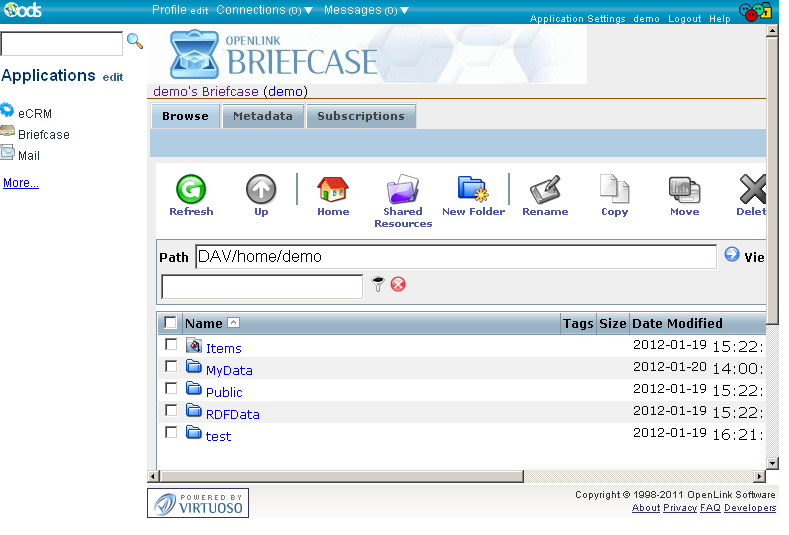

Running simple rdf vcard application how to#
How to deal with the contradiction that the vCard ontology used different properties for specifying whether or not a certain telephone was a mobile number or home number, but this approach ran into difficulties when explaining common cases such as when a mobile phone number is also a preferred phone number, or the creation of new type parameters.The current submission is neutral on this point, noting that "Resources that are vCards and the URIs that denote these vCards can also be the same URIs that denote people/orgs", so allowing both design patterns. However, as a person may have different "business cards", it is useful to mint a URI not for the person, but of the card itself and deploy the card. In common practice, these properties are generally often used directly as the properties of URIs that refer to organizations. A further question is whether these properties may be applied to an organization. Whether or not a "vCard" represented either an electronic business card, or the "real-life" properties of a person.The most difficult part of the specification was specifying these two particular issues: To our knowledge, Renato Iannella has carefully addressed every comment, including many from the W3C Team. We are aware that this particular specification has had over a year of review in the Semantic Web Interest Group and the Social Web Incubator Group, and has gone through review in a face-to-face meeting at the European Semantic Web conference in 2009 and additional review on the "Pedantic Web" mailing list. To ensure that developers can easily find the latest specification, the URI of the previous submission has been re-used.
Running simple rdf vcard application update#
Therefore we congratulate Renato Iannella for unifying the previous version of Representing vCard Objects in RDF/XML with An ontology for vCards in this update to his original member submission. Furthermore, the existence of two distinct and conflicting specifications for expressing vCard in RDF left end-users in considerable confusion. However, this ontology was not given proper review or W3C status, and it was difficult to express many of the more complex vCard constructions using this language, even though in its most basic form it was deployed by applications like Yahoo! SearchMonkey.


This led to Norm Walsh and others creating an easy-to-use syntax, An ontology for vCards for the purpose of creating an easy-to-use mapping of the popular hCard microformat. This update is necessary as the original vCard member submission, one of the earliest vocabularies created by RDF, was found by some users to be difficult to deploy.

This submission updates an earlier member submission, Representing vCard Objects in RDF/XML. The W3C is pleased to receive the Representing vCard Objects in RDF submission edited by Renato Iannella from NICTA, and notes this submission is the product of a long-standing collective effort from the wider Semantic Web community. | Submissions Team Comment on "Representing vCard Objects in RDF" Submission Team Comment on the "Representing vCard Objects in RDF"


 0 kommentar(er)
0 kommentar(er)
